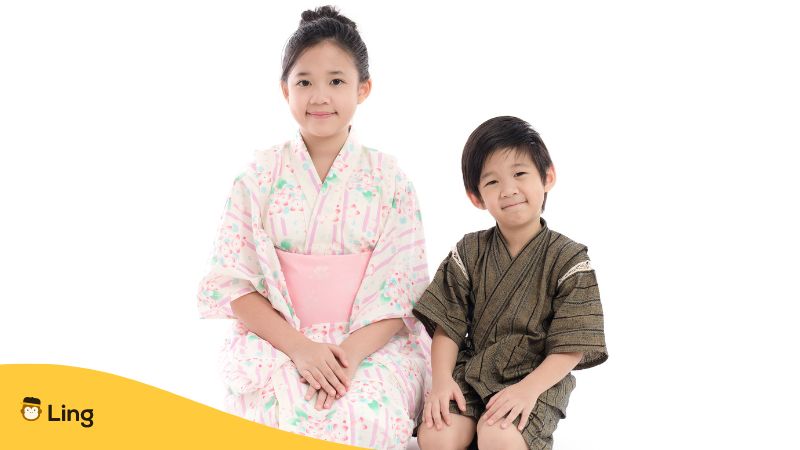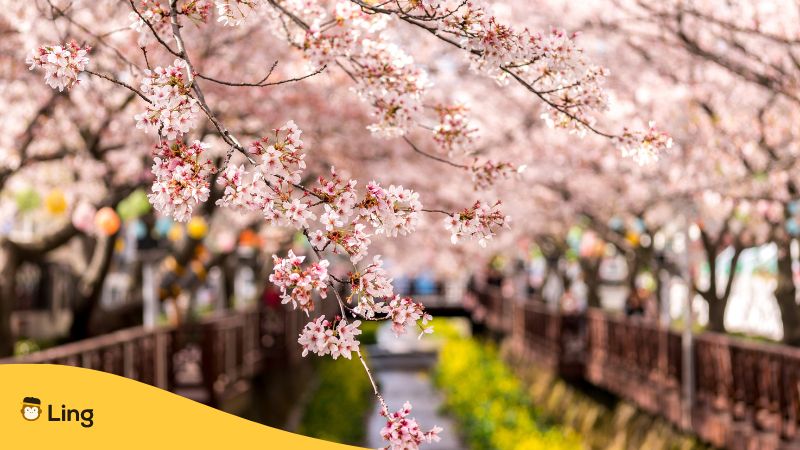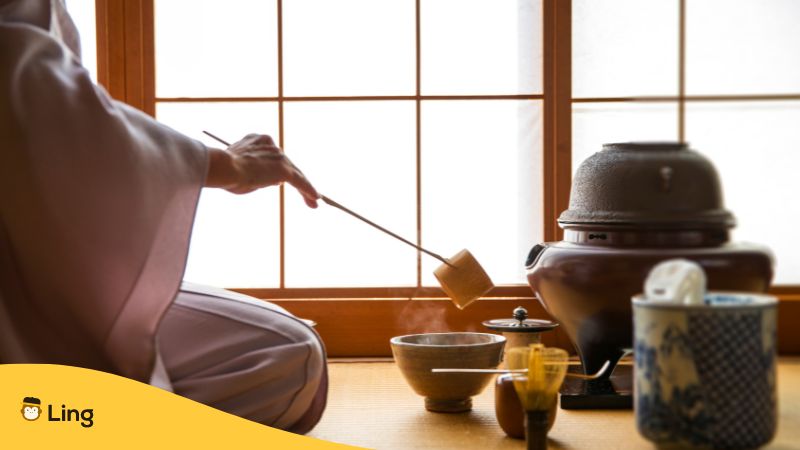When learning Japanese, you’ll come across some unique Japan traditions and rituals that you might not be familiar with, especially if you live in the West. There are a lot of fascinating Japanese traditions out there that give you an insight into their unique culture. Today, we’ll be taking a look at some of Japan’s more unique festivals and traditions. Learning all of these customs can help develop a deeper appreciation of the country’s culture while teaching you a new Japanese word or two along the way!
Japan Traditions And Rituals Worth Traveling For
Kanamara Matsuri (かなまら祭り)
This annual event, also known as the Festival of the Steel Phallus, is one of Japan’s most unique celebrations and may cause culture shock to people visiting Japan for the first time. It’s all about honoring the Shinto deities of blacksmithing, who are said to have a special connection to the male anatomy.
People flock to this festival to pray for fertility and protection from sexually transmitted infections. Back in the day, sex workers would come to the festival to pray for their protection. Nowadays, people from all walks of life make the pilgrimage to Kawasaki and its Shinto shrines to pay their respects to the gods – and have fun all the while.
Setsubun (節分)
Setsubun is one of the most popular Japanese traditions, heralding seasonal changes. Celebrated on the 3rd or 4th of February, this holiday is all about cleansing both body and home of bad vibes. One of its most unique practices is maemaki (豆撒き), which means “bean throwing.” Revelers throw roasted soybeans all around the place to ward off evil spirits and attract good fortune.
As with many Japanese festivals, food is also one of the highlights. A specially-crafted makizushi roll known as eho-maki (豆撒き), meaning “lucky direction roll,” is served everywhere, from homes to the many temples that celebrate this festival. It is usually eaten while looking in your lucky direction, as told by your paper fortune. This festival is part of Japanese daily lives, and food is symbolic of their hope for their well-being in the new year.

Shichi-Go-San (七五三)
Shichi-Go-San, literally translating to “Seven-Five-Three,” is a tradition many Japanese people hold dear. The numbers in the festival pertain to the ages where children are taken to temples, where the gods are asked for their blessing. It’s a day when the entire nation dresses up their kids – making for a picture-perfect tradition!
On the day, children dress up in traditional Japanese clothing, wearing ornately crafted kimono (着物) and hakama (袴). However, Japanese customs can be flexible with this, with some parents choosing to dress their children in Western attire instead.
They are then escorted by adoring parents and grandparents – as chaperones and photographers – to their local Shinto shrine, where everyone participates in a blessing ceremony that prays for their continued well-being. They also receive amulets called chitose-ame (千歳飴), which are long, thin red and white candy (kind of like candy canes!) wrapped in a special paper with the kanji 千歳, which means one thousand years – symbolizing long life and good health!
Kagami Biraki (鏡開き)
Kagami Biraki (鏡開き) is a traditional Japanese ceremony that is 50% New Year party, 50% samurai tradition, and 100% all about the sake. Its name literally means “opening the mirror” and involves the unique practice of cracking open a barrel of sake with a wooden mallet.
Its origins can be traced back to the Edo period when samurai warriors would gather to perform the ceremony to pay tribute to the gods and spirits that protected their homes. The practice was later adopted by the peasantry and became ingrained in the culture of Japan.
In modern Japanese culture, kagami biraki is often held in martial arts dojos, government offices, and places of business. A large barrel of sake is brought out by festival sponsors and broken open with a wooden mallet called a kizuchi (杵). The sake is then served to the expectant guests, who are all too happy to ring on New Year’s Day together.

Hanami (花見)
Hanami (花見), a.k.a. the Japanese flower viewing festival, is a dazzling period on Japan’s calendar that you won’t want to miss! With roots dating back to the Nara period, the tradition initially started as an aristocratic affair before spreading to the masses. When the first sakura (桜) trees bloom in late March or early April, it’s the cue for hanami to begin.
But be warned, these stunning blossoms are like a flash in the pan—they only stick around for two weeks! To make the most of this magical season, Japanese people flock to parks and public spaces for picnic parties beneath the blossoms. So, grab your picnic blanket and join in on the hanami fun as you marvel at the delicate beauty of the cherry blossoms. This season is very famous, so expect foreigners to enjoy the view with you.
Noh Theater (能)
Noh (能), a mesmerizing Japanese theater discipline, has captivated audiences since the 14th century, making it one of the oldest forms of theater still performed today as a showcase of Japanese culture. It’s a unique combination of masks, slow movements, and poetic language that sets it apart from other performance arts. The intriguing stories, usually inspired by Japanese mythology and history, come to life as actors don elaborate costumes and use props like swords, fans, and bells.
But it’s not just about the visuals—traditional music plays a massive role in Noh performances. You’ll be treated to the soothing sounds of the fue (笛) or Japanese flute, the ethereal biwa (琵琶) or lute, and the heart-pounding beats of the taiko (太鼓) drums. But don’t be fooled; mastering Noh theater is no walk in the park—it’s a highly refined art form that requires years of dedicated training.

Tea Ceremony (茶道)
Perhaps one of the most famous Japanese customs in the world, chado (茶道), or literally, “the way of tea”, is a Japanese tradition defined by its focus on the artful preparation and presentation of matcha (抹茶) – a velvety, powdered green tea. This centuries-old practice is all about appreciating simplicity and finding a sense of peace in the moment.
Japanese tea ceremonies are held all over the country in traditional tearooms known as chashitsu (茶室), designed to have a serene atmosphere. Every chashitsu in Japan is enhanced by elegant touches of Japanese culture: flower arrangements, traditional calligraphy, and pottery.
Ceremonies are performed by chado practitioners, mesmerizing their audience with precise movements and gestures, where a few minutes feel like an eternity you never felt pass. Even pouting hot water becomes a beautiful art form.
It becomes clear to anyone experiencing chado that it is more than eating snack food or enjoying a cup of matcha. Japanese culture places a premium on aesthetics, and chado is one of the best ways to experience this firsthand!
Sumo Wrestling (相撲)
Sumo wrestling is one of the most popular Japanese traditions worldwide, owing to the appearance of the fighters. This traditional Japanese sport has a history that spans 1,500 years, with rules that have remained mainly unchanged for the whole time. In this intense, high-stakes form of wrestling, two rikishi (力士), which means “strong man,” battle in a circular ring called a dohyo (土俵), each trying to force their opponent to touch the ground outside of it. Wrestlers duke it out wearing a special silk or cotton loincloth called a mawashi (廻し).
Contrary to popular belief, rikishi come in many shapes and sizes, and battle it out in different weight classes, too! This form of wrestling is still widely popular in Japan today, with fans rallying behind their favorites.

Learn Japanese With Ling
Japan is a country with a long, rich history and culture. If you want to truly immerse yourself in Japanese, visiting Japan and learning the language is the best way to do it! And we know of a way to make learning Japanese easy, fun, and memorable…
And it starts with the Ling app: the language learning platform for people who want to learn Japanese quickly! Each lesson is crafted to ease you into the world of the language you are learning – from terms about eating food to the names of the distinct seasons.
Plus, Ling has language lessons in over 60 different languages! Get started on your language learning journey today by downloading the Ling app for free for Android or iPhone.







